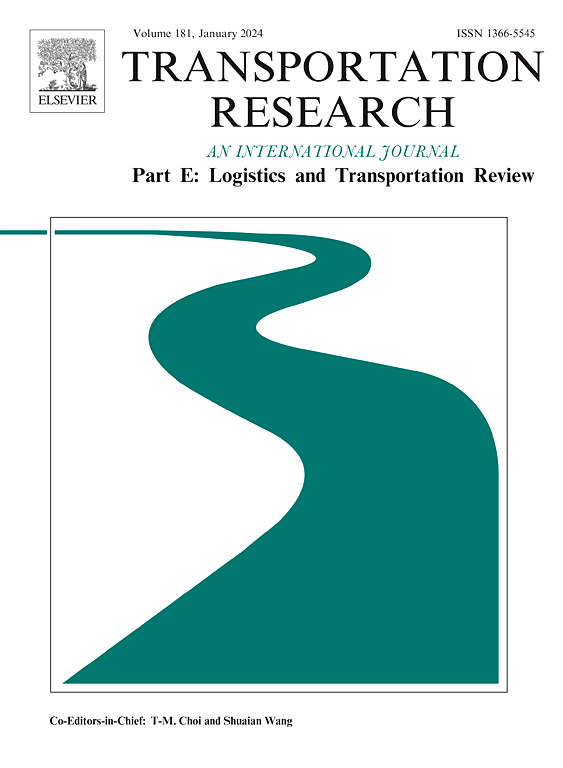Express shipments with autonomous robots and public transportation
IF 8.8
1区 工程技术
Q1 ECONOMICS
Transportation Research Part E-Logistics and Transportation Review
Pub Date : 2024-09-26
DOI:10.1016/j.tre.2024.103782
引用次数: 0
Abstract
Growing urbanization, exploding e-commerce, heightened customer expectations, and the need to reduce the environmental impact of transportation ask for innovative last-mile delivery solutions. This paper explores a new express shipment model that combines public transportation with Autonomous Robots (ARs) and studies its real-time management. Under dynamic demand arrivals with short delivery time promises, we propose a rolling horizon framework and devise a machine learning-enhanced Column Generation (CG) methodology to solve the real-time AR dispatching problem. The results of our numerical experiments with real-world delivery demand data show the significant potential of the proposed system to reduce travel time, vehicle traffic, emissions, and noise. Our results also reveal the efficacy of the learning-based CG methodology, which provides almost the same quality solutions as the classical CG approach with much less computational effort.
利用自主机器人和公共交通进行快件运输
日益发展的城市化、爆炸式增长的电子商务、不断提高的客户期望以及减少运输对环境影响的需要,都要求采用创新的 "最后一英里 "递送解决方案。本文探讨了一种将公共交通与自主机器人(AR)相结合的新型快运模式,并研究了其实时管理。在短交货期承诺的动态需求到达情况下,我们提出了一个滚动视野框架,并设计了一种机器学习增强型列生成(CG)方法来解决实时 AR 调度问题。我们利用真实世界的配送需求数据进行的数值实验结果表明,所提出的系统在减少旅行时间、车辆流量、废气排放和噪音方面潜力巨大。我们的结果还揭示了基于学习的 CG 方法的功效,它能以更少的计算量提供与经典 CG 方法几乎相同质量的解决方案。
本文章由计算机程序翻译,如有差异,请以英文原文为准。
求助全文
约1分钟内获得全文
求助全文
来源期刊
CiteScore
16.20
自引率
16.00%
发文量
285
审稿时长
62 days
期刊介绍:
Transportation Research Part E: Logistics and Transportation Review is a reputable journal that publishes high-quality articles covering a wide range of topics in the field of logistics and transportation research. The journal welcomes submissions on various subjects, including transport economics, transport infrastructure and investment appraisal, evaluation of public policies related to transportation, empirical and analytical studies of logistics management practices and performance, logistics and operations models, and logistics and supply chain management.
Part E aims to provide informative and well-researched articles that contribute to the understanding and advancement of the field. The content of the journal is complementary to other prestigious journals in transportation research, such as Transportation Research Part A: Policy and Practice, Part B: Methodological, Part C: Emerging Technologies, Part D: Transport and Environment, and Part F: Traffic Psychology and Behaviour. Together, these journals form a comprehensive and cohesive reference for current research in transportation science.

 求助内容:
求助内容: 应助结果提醒方式:
应助结果提醒方式:


